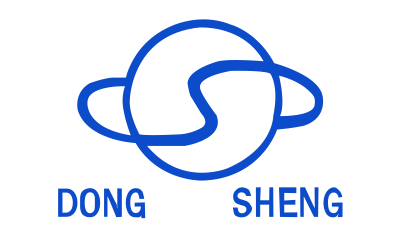In oil extraction, the material selection of spiral sucker rod centralizer directly affects the operation and maintenance cost and production efficiency of oil wells. The performance of spiral sucker rod centralizer of different materials is obviously different, and its core value can only be realized by combining the scientific selection of well conditions. We, Dongsheng Petroleum, have been engaged in the field of oilfield equipment for many years and have conducted in-depth research on the application characteristics of spiral sucker rod centralizer of various materials. We will start from the three mainstream materials of metal, polymer, and composite materials, analyze the advantages and disadvantages of different materials and applicable scenarios, and provide a reference for oilfield companies in the selection of types.
Metal material spiral sucker rod centralizer:
Metal spiral sucker rod centralizer uses carbon steel, alloy steel, and stainless steel as raw materials, and its core advantages lie in high strength and impact resistance. This kind of its can withstand the huge lateral force of the reciprocating movement of the sucker rod, and its stability is outstanding in the high-pressure environment of deep and ultra-deep wells; After the surface is chrome-plated and nitrided, the wear resistance is greatly improved, and it can be adapted to high sand wells, and it can be repaired and reused after scrap, which is in line with the trend of green mining.
However, the shortcomings of metal materials are also obvious: The weight is large, which will increase the load on the pumping rod and column, resulting in an increase in the consumption of the pumping function; The thermal conductivity is strong, and it is easy to wax in low-temperature wells or waxy crude oil mining, which affects operation; Ordinary metals have weak corrosion resistance, and additional anticorrosive treatment is required in acidic oil wells, otherwise it is easy to rust and shorten life.
Taken together, the metal spiral sucker rod centralizer is suitable for deep wells, ultra-deep wells, high-sand wells with a sand content of >5%, and high-intensity load scenarios.
Polymer material spiral sucker rod centralizer:
The polymer spiral sucker rod centralizer uses polyethylene, polypropylene, and nylon as raw materials, and its lightweight and corrosion resistance are its core highlights. Under the same specifications, the weight is lower than that of metal materials, which can reduce the load on the sucker rod and reduce energy consumption, especially suitable for long-stroke mining in shallow and medium-sized wells; Strong chemical stability, long-term operation in acidic oil wells without additional anticorrosion, and low coefficient of friction, can protect the oil pipe and the sucker rod, and reduce operating noise.

However, it has performance limitations: poor high temperature resistance, easy to soften and deform when the downhole temperature is >80℃, and it is not suitable for high-temperature wells; Weak impact resistance, severe swing of the sucker rod in directional and horizontal wells can easily cause it to break; The wear resistance is not as good as metal, and it is easy to wear and fail in high-sand wells and should be replaced frequently.
Therefore, the polymer spiral sucker rod centralizer is more suitable for shallow and medium-sized wells, low-temperature wells, acidic wells and scenarios with sand content <3%. We have improved the formula of polymer materials and launched the nylon spiral sucker rod centralizer with a temperature resistance of up to 100℃, further broadening the scope of application.
Composite material spiral sucker rod centralizer:
The composite material spiral sucker rod centralizer is made of glass fiber, carbon fiber and resin matrix, which combines the advantages of high metal strength with high molecular weight and corrosion resistance. It has a wide temperature resistance range, strong acid resistance, and is suitable for complex underground environments; It has a long fatigue life and can adapt to the high-frequency reciprocating movement of the sucker rod, reducing the frequency of replacement.
However, its production cost is higher, the raw materials and processing technology are complex, and the initial procurement cost is higher than that of other materials; It is prone to fiber fracture under extreme impact, and it is difficult to repair after damage, so it can only be replaced as a whole.
In terms of applicable well conditions, the composite material spiral sucker rod centralizer has the broadest adaptation range and can be used in medium-deep wells, high-temperature wells, acidic high-sand wells, directional wells, and horizontal wells. This type of spiral sucker rod centralizer developed by Dongsheng Petroleum has been applied on a large scale, reducing costs by improving the process and providing cost-effective options.
Selection suggestions:
When selecting types for oilfield companies, they need to integrate well depth, downhole temperature, medium corrosion, sand content and cost: metal spiral sucker rod centralizer is preferred for deep wells, ultra-deep wells, and high-sand wells; Medium shallow wells and acidic wells pay attention to energy consumption control, and polymer materials are better; Medium-deep wells and high-temperature complex well conditions pursue balanced performance, and composite materials are the first choice.
As a professional petroleum pump manufacturer, Dongsheng Petroleum can provide customers with customized it solutions, match the recommended specifications of well conditions, and provide perfect technical support and after-sales service. Choosing the right it can effectively protect equipment, extend life, and help oil fields improve production efficiency and economic benefits.

